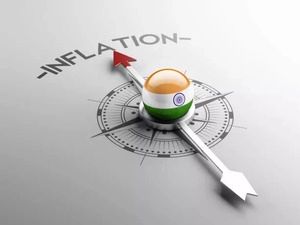🤔🚀How US Fed rate hikes can impact the Indian Economy?
The Federal Reserve of the United States (Fed) raised its benchmark interest rate by 75 basis points in June to combat the country's 40-year-high inflation.
This is the most significant rate increase since 1994.
The Fed has indicated that it will raise interest rates by another 175 basis points this year. The aggressive rate hikes will dampen demand and cause an economic slowdown. The Fed has reduced its growth forecast for 2022 to 1.7% from 2.8% in March.
A sharp increase in interest rates could hasten capital outflows, weaken the rupee, and increase the risk of imported inflation. Rate hikes that are too aggressive may increase the likelihood of a US recession. This could have an impact on some of India's export-oriented industries.
💁 So, what is Inflation? 💁
Inflation is a measure of the rate at which the price of goods and services in the economy rises. Ultimately, it demonstrates the rupee's declining purchasing power. It's measured in percentage. This percentage indicates whether or not there has been an increase or decrease since the previous period. Inflation can be concerning because the value of money depreciates as inflation rises.
In simple words, Inflation means that the general level of prices is going up. More money will need to be paid for goods (like edible oil, pulses, wheat, etc.) and services (like getting a haircut at the hairdresser's).
🤔 What prompted the Fed to raise interest rates by 75 basis points?
Inflation in the United States, as measured by the Consumer Price Index (CPI), rose by 8.6% year over year in May. In April, the CPI inflation rate was lower than it had been the month before. This gave people hope that inflation in the US may have reached its peak.
Concerns were raised that aggressive rate hikes at a time when inflation was slowing down could cause unemployment to go up and wages to go down.
But the fact that inflation was so high in May made it more likely that the Fed would raise rates by 75 basis points.
💥💥 How the rate hikes will impact India? 💥💥
⚈ Narrowing interest gap and FII outflows :
Since the second half of 2021, the Fed has signalled that it will reverse its ultra-accommodative monetary policy and turn its focus on inflation. Since January 2022, the US Fed has been hiking rates. The significant rise in global rates is shrinking the interest rate gap.
The 75 basis points raise in interest rate by the Fed will accelerate the pace of withdrawals by foreign institutional investors. So far in this fiscal year, FIIs have pulled out more than USD 26 billion from debt and equity. The large withdrawals are likely to continue with the Fed suggesting further rate hikes this year.
⚈ Weaker Rupee:
The rapid outflow of foreign investments, combined with rising crude oil and commodity prices, could put downward pressure on the rupee. So far this year, the rupee has depreciated by 5% against the US dollar.
The Indian rupee's depreciation is not out of step with the currencies of other emerging economies. With the ongoing uncertainty surrounding the war, capital is flowing to safe havens such as the United States, strengthening the dollar. Despite aggressive central bank intervention, the rupee has already breached the 78-per-dollar mark.
⚈ The threat of Imported Inflation:
A persistent decline in the rupee will exacerbate the issue of imported inflation.
A lower rupee will boost the cost of imported inputs even if world prices stay steady. India is a significant crude oil importer. The devaluation of the rupee will increase the cost of oil imports. Already, the increase in oil imports is exerting pressure on India's current account imbalance. In 2022-23, the current account deficit is projected to increase to 3%.
⚈ Possibility of a moderate recession and repercussions for India:
After aggressive rate hikes, US recession risks grew. Inverted or flatter yield curves signal recession. In normal circumstances, yields should rise with tenure. Generally, Long-term investors demand higher yields. But when they fear growth, they accept lower rates for longer terms. Inverted yield curves signal short-term uncertainty.
In recent months, the US yield curve has inverted many times, meaning short-term bond yields rose faster than long-term yields. An inverted yield curve is connected with a near-term recession, according to the Chicago Fed.
The possibility of a recession or a slowdown in growth will have an impact on India's export-oriented industries, particularly the IT industry. The United States contributes between 40 and 80% of IT companies' revenue. A recession or slowdown will have an effect on the revenues of the Indian IT industry.
A strategy to diversify exports could reduce the negative impact of a US recession.
💡 Opinion on Stock Market 💡
Compared to other emerging markets, the Indian stock market trades at the highest premium. And, if Inflation continues, we may expect more corrections since Inflation will force the government to raise interest rates sharply, increasing the chances of an economic downturn. FIIs would continue to sell in Indian markets till the market becomes more conducive to investment.
The market is currently holding at higher levels due to retail participation via DIIs. However, if they cease injecting money, we may witness a more severe correction in the future. That is why it is best to avoid the market for a while until it settles. If FIIs continue to sell at this rate, the Nifty could reach Rs 12000 - Rs 14000 levels.
⚠️ Disclaimer:
The information shared above is only for educational purposes. Please consult your financial advisor before making any investment decision.
🌟 Do share your views/queries in the comment box below 🌟
